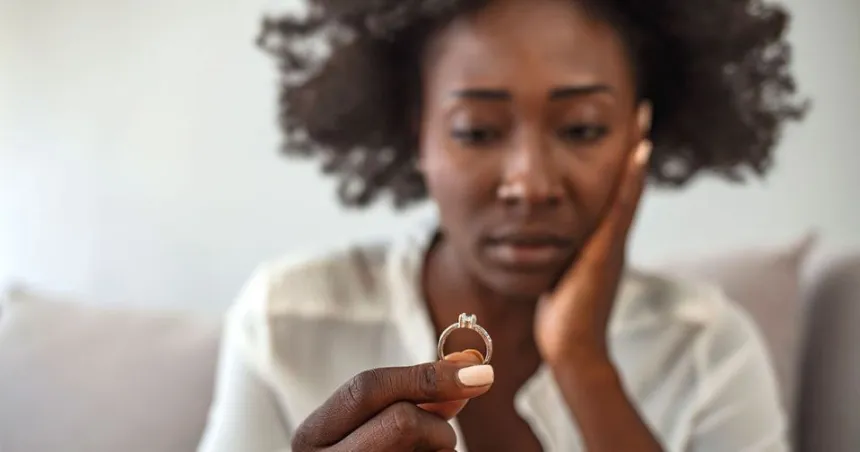Decades of research have identified many predictors of whether romantic relationships will last.
Here are 24 of the most reliable predictors of a breakup—or “romantic relationship dissolution” in the language of academics:
- Absence of positive illusions: Not having the common bias toward seeing the good in one’s partner
- Lack of commitment: Being unsure that one wants their future to include the other person
- Lack of love: Having little affection for the other person or concern for their well-being
- Low inclusion of other in self: In relationships that last, a person’s concept of their partner overlaps with their concept of themselves
- Low dependence: Not feeling like one needs their partner
- High ambivalence: Being unsure if one wants to continue in the relationship
- Mistrust: Doubting that one’s partner is dependable or trustworthy
- Low self-disclosure: Not opening up and sharing one’s thoughts and feelings to the other person
- Low closeness: Lacking a strong sense of connection
- Alternative partners available: Believing that one could easily partner with someone else if the relationship ended
- Low relationship investment: Having put little into the relationship, whether money, time, or effort
- Low adjustment: Struggling to adapt to life’s challenges and demands
- Relationship dissatisfaction: Being unhappy about how the relationship is going
- Low relationship quality: Related to dissatisfaction, judging that the relationship has more negatives than positives
- Shorter relationship length: The longer a couple has been together, the less likely they are to part ways—related in part to relationship investment
- High conflict: Having frequent and intense arguments, often involving strong expressions of fear and anger that show up in physiological reactivity (e.g., elevated heart rate)
- Avoidant attachment: A style of relating to other people that involves a fear of getting too close and being smothered or controlled
- Anxious attachment: Being afraid that one will be abandoned or betrayed by their partner
- Destiny beliefs: Assuming that couples either are or are not meant to be together, and that relationship struggles likely mean it just wasn’t in the cards
- Disagreeable personality : Being hard to get along with—for example, quickly becoming belligerent during a conflict
- Low network support: Having few close relationships besides one’s partner
- Low positive emotion during everyday conversations: Showing little affection and interest toward each other
- Infidelity: Having sex with someone outside the relationship
- Persistent strain: Going through longstanding stresses that wear a person down
(Please note that these general trends sometimes vary depending on the type of relationship [e.g., same-sex male, same-sex female, male/female] and that same-sex couples often make up a small proportion of participants in the studies.)
Most of these variables aren’t surprising. It’s important to note that while they signify a higher probability that a relationship will end based on large numbers of research participants, they don’t provide black-and-white certainty for any specific relationship.
All of us have some of these factors in our relationships at one point or another. Every relationship, for example, is initially of short length, and the closeness of our relationships may wax and wane.
If we weren’t willing to tolerate some degree of imperfection in our relationship, none of us would stay with a partner for long.
When Is a Relationship Doomed?
But how much is too much? What is the threshold, beyond which a couple will definitely part ways? Obviously having more of these 24 factors makes a breakup more likely, but what amount of which combinations of variables turns a relationship truly toxic?
Relationship science can’t answer that question with precision, at least not yet. Part of the challenge is that each person places a different value on each of these dimensions—for example, some might find a lack of self-disclosure to be a real deal breaker, while others may actually prefer it.
There are tradeoffs in relationships, too; a couple may be high in conflict but also share a lot of closeness and commitment.
Nurturing Your Relationship
Crucially, many of these variables are just that—variable. They’re not fixed, like genes or eye color. So if you’re hoping to make your relationship last, you’re not completely at the mercy of things outside your control.
Rather than asking if their relationship is doomed, a couple might ask the following questions:
- How can we create more trust?
- Are we willing to be more self-disclosing?
- What might foster closeness?
- How can we invest more in our relationship?
- What might improve the quality of our relationship?
- How can we show each other more interest and attention?
- How can we help one another deal with life stress?
I’m not suggesting that every couple ought to stay together. But perhaps the greatest sign of relationship commitment is the willingness to work on the things that make relationships last.
Try this simple three-step exercise, adapted from Mindful Cognitive Behavioral Therapy:
- Be: Let your eyes close and take a slow breath in and out. Settle into this moment.
- Think: What is one small thing you could do to make your relationship a tiny bit better?
- Act: Plan a specific time to carry out your plan, and follow through when the time comes.
The post 24 Signs That a Romantic Relationship Is Likely to End appeared first on The Ghana Report.
Source: pabbynews.com

